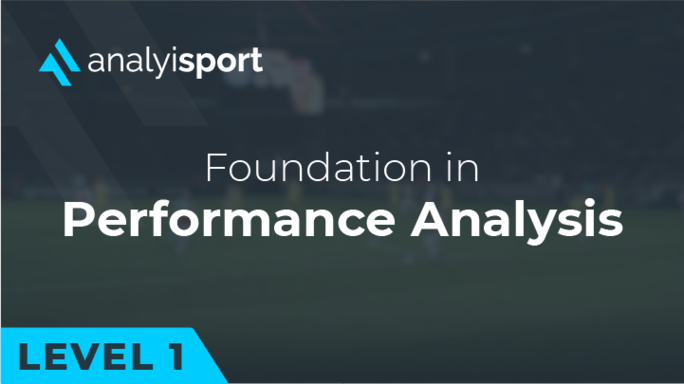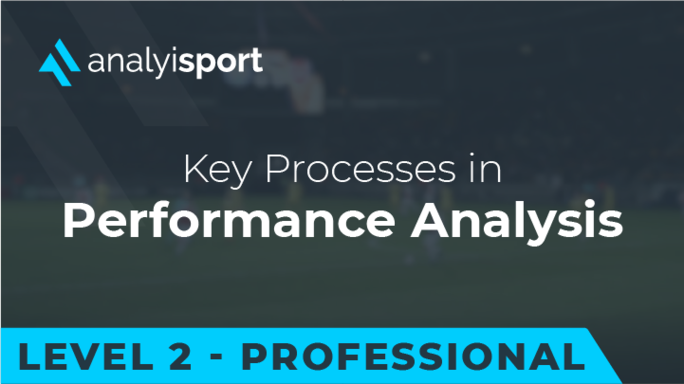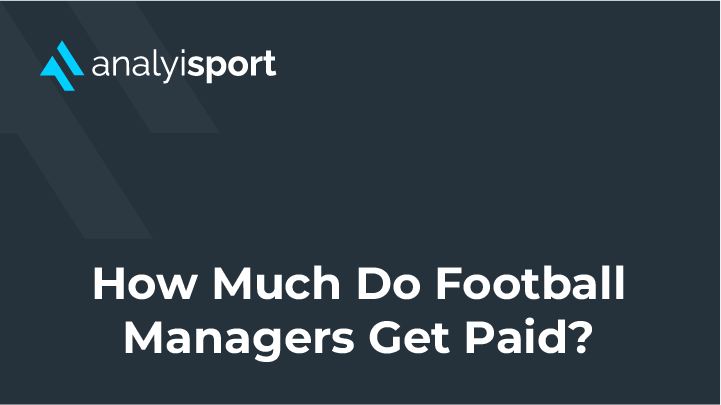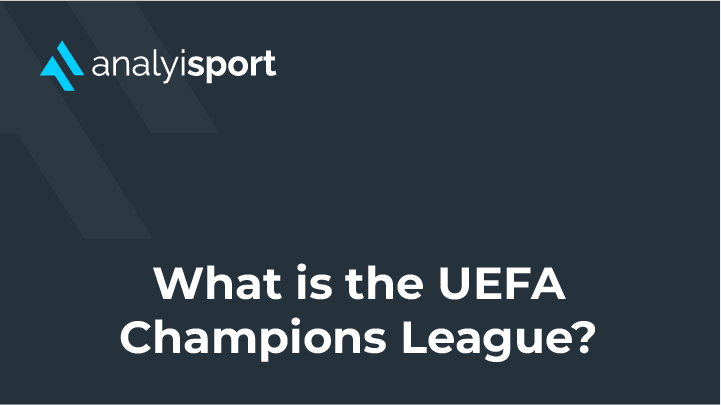“What Can Data Do for a Football Club?” A Case Study of Brentford F.C.
“What Can Data Do for a Football Club?” A Case Study of Brentford F.C.
Brentford F.C. are regularly described as a Moneyball club. Like Oakland Athletics, the baseball team featured in Martin Lewis’s book Moneyball which became a film starring Brad Pitt, the West London club has used data analysis to overcome the limitations of a small budget, doing things differently from other clubs. As Rasmus Ankersen, Co-Director of Football at Brentford, puts it: ‘For David to beat Goliath, he needed to use a different weapon. If David had used the same weapon, he would have lost the battle. You’ve got to find your weapons. That’s what Brentford is about.’
Such success is a welcome change for Brentford fans. Back in the 2013-14 season, the club were playing in League One, the third tier of English football. Back in 2008, they finished in the bottom half of the fourth tier. They have not played in the top flight since 1947, the first season after the end of the Second World War, and have never won a major cup.
Their recent rise has been remarkable, but to simply say it is down to their use of spreadsheets and statistics would be an oversimplification. Data analysis has been an important tool for Brentford, one of the weapons they have used to fight football’s Goliaths, but just as important has been the intelligent and pragmatic way they have used it.
Matthew Benham’s Ownership
Things started to change at Brentford in June 2012, when current owner Matthew Benham became the majority shareholder. For Benham, a lifelong fan of the club, the appeal of buying the club was partly sentimental. He attended his first Brentford match as an 11-year-old in 1979, watching the Bees beat Colchester United in the old Division Three and had supported them ever since. In the years before he bought a controlling stake in the club, he had invested significant sums to help keep the club afloat.
The season before he bought the club, they finished ninth in League One. It did not take long for their fortunes to change. In the 2013-14 season they won promotion after finishing second and the next season they finished fifth in the Championship. Since then the club has consistently finished in the top half of the division and reached the semi-final of the EFL Cup in 2020-21.
Benham made his millions with sports betting companies, including the company Smartodds which he founded in 2004. Smartodds uses statistical research to help its clients better understand the gambling market and increase their chances of beating the bookies. Their research team provides detailed analysis of the data from various football leagues around the globe in order to predict future outcomes.
Benham has brought a similar emphasis on data and statistical research to football, although he has always been keen to emphasise that the club combines the use of data with more traditional approaches. Behind the scenes he has brought in people with an expertise in data and performance analysis, including the two Co-Directors of Football, Rasmus Ankersen and Phil Giles. Giles worked for Smartodds as Head of Quantitative Research and has a PhD in statistics. Ankersen briefly played in Denmark for FC Midtjylland before injury ended his career prematurely. He is a published author, public speaker and the source of the most memorable soundbites about how the club is run. Robert Rowan, who has also been crucial behind the scenes in his role as the club’s Technical Director, tragically died in 2018 at the age of 28.
Data has been important, but it is certainly not the case that since Benham has taken over every decision made at Brentford has been simply a matter of statistics. Back in 2014, Benham told fans, ‘We use some elements of Smartodds’ models at Brentford. But it’s only a small part of the process.’ The club has undergone a flexible and gradual change, rather than an overnight revolution. Benham has invested over £100 million in the club, but rather than using such money to fund extravagant transfers, he has tried to make the club sustainable and self-sufficient. The club has tried to find ways to use data to do things differently off the pitch in order to gain an advantage on it. One of the key ways the club has done this is by altering the way players are recruited.
Closing the Academy
One way smaller clubs can aim to be self-sufficient is to invest in youth development. Norwich City have had success in recent years by bringing players through their academy and then selling them on.
In the early years of Benham’s ownership, the club was keen on this route, with Benham considering upgrading the academy. However, the club came to realise that for them this approach was not effective. In 2016, the club lost two of their best academy prospects. Ian Carlo Poveda was snapped up by Manchester City and Josh Bohui left for Manchester United. Because the players were both under 16, and therefore too young to have signed professional contracts, the Manchester clubs only had to pay a very small amount of compensation for the players—about £30,000 each.
Brentford were spending £1.5 million a year on the academy, but most of the players coming through the academy did not make the grade. Those who did show a lot of potential were leaving for bigger clubs before Brentford could develop them into first team players or sell them for a significant profit.
So the club ditched their academy. Instead, the club decided to focus on recruiting from overseas, where transfer fees are generally smaller, and picking up young talented players who have been overlooked in the English game.
The club’s youth teams were replaced with a B team, which exists to develop the club’s younger signings and prepare them for the first team, including players from Germany and Denmark as well as players let go from the academies of bigger clubs. Ankersen has explained that ‘If you look at the number of players released by Premier League academies, that’s a massive number. They make mistakes.’ The B team system allows Brentford to recruit and nurture that talent. The club closely scout the youth teams of the top clubs, gathering detailed information on each player, meaning that if a player with potential becomes available to sign they can swoop in.
Transfers
As the club has moved up the football ladder, their transfer policy has been remarkably profitable. Brentford have shown a remarkable talent for finding undervalued players to sign at a cheap price, improving their skills on the training pitch and then selling them on for big fees.
Since 2016, Brentford have spent about £75 million on transfer fees, but recouped over £190 million in sales. Neal Maupay was signed from French side Saint-Étienne for about £1.6 million in 2017 and sold to Brighton and Hove Albion two years later for a fee in the region of £20 million. Ollie Watkins, signed from Exeter City for about £6.5 million in the same year the club signed Maupay, was sold to Aston Villa for just over £30 million in 2020. The club has also made a very healthy profit on players such as Saïd Benrahma and Andre Gray.
The profits from this transfer policy have allowed the club to build a new stadium, which they moved into in 2020, and compete for promotion to the top flight against clubs with much bigger revenue bases. With each sale, they seem able to find the next talent to fill the vacated position in the side. After losing Ollie Watkins, they bought in Ivan Toney from Peterborough. Toney finished the 2020-21 season as the top goalscorer in the Championship.
The players the club has sold for the biggest profits have been those they have found abroad, such as Maupay and Benrahma, both from French football, and those who were playing a lower league clubs in England, such as Watkins at Exeter, Andre Gray at Luton and Scott Hogan at Rochdale.
One way they have used data to find such players, is by creating models to compare the strength of teams from different leagues. This allows Brentford to find sides doing well in leagues which are less high profile and in which players are more cheaply available. They can then scout these players in more detail. As Ankersen has said, when describing the club’s transfer policy, ‘It’s not that data tells you who to pick, data can tell you where to look.’

Once the club knows where to look, they then use more conventional scouting methods. Ankersen has said that, “There’s no player I’ve ever recruited at Brentford without data having its say, but also no player recruited without the traditional method having had a say.”
This way of doing things does not always work out. In January 2017 the club signed Henrik Johansson, an 18-year-old from Sweden after discussing the player with Smartodd’s own Swedish football analyst as well as doing their own scouting. The player failed to develop into a first-team regular. Making the right signing is not an exact science.
Evaluating Success
As well as talking about the club’s transfer policy, Ankersen has also spoken about the way the club uses analytics to judge success, revealing that, ‘We don’t look so much at the league table position when we evaluate performance. What we look at are the underlying metrics, which we believe are a better indication of where we are going and how we’ve done.’
This is based on the idea that because football is a low-scoring sport, temporary swings of luck can impact results and give a false picture of whether a team is performing well or not. One fluke goal can turn a win into a drawer. This contrasts with higher scoring sports, such as basketball, where one moment of good or bad luck is less likely to influence the overall outcome.
The way the club evaluates performance means that it is not always easy for outsiders to predict whether a manager will stay or be let go. In 2015, Brentford made the surprise decision not to offer a new contract to manager Mark Warburton. Warburton had achieved promotion the previous season and the team were looking good to finish in the play offs in the Championship. Normally, such a manager would be seen as performing well in the job, but it has been suggested that the club’s data showed that the team had overachieved due to luck and that the success on the pitch did not truly reflect their performances.
For those outside a club, knowing exactly why a manager has been let go is often partly guesswork and in the case of Warburton there was also speculation of a row about transfer policy between the manager and the rest of the recruitment team. Whatever the precise reason, the manager exited the club at the end of the season despite seeming to have achieved success on the pitch.
The early days of Thomas Frank’s spell in charge were another occasion when the club’s evaluation of a manager’s performance did not match the team’s performances in the league. After the Danish manager took charge following the departure of Dean Smith, he lost eight of his first ten matches. Such a terrible start at a different club could well have resulted in the manager being swiftly sacked and his appointment written off as a mistake. But Brentford must have seen enough in their underlying metrics to keep faith in the manager. They have been duly rewarded, with Frank twice guiding the club to the play-offs.
Other Clubs Following Suit
As well as owning Brentford, Benham also owns the Danish side FC Midtjylland, becoming their major shareholder in 2014, two years after acquiring Brentford. Brentford’s Co-Director of Football, Rasmus Ankersen, serves as part-time chairman to the Danish club and data specialist Ted Knutson worked as Head of Player Analytics for both clubs before going on to co-found sports data company StatsBomb. As the overlapping personnel would suggest, data has been just as important to the Danish club as it has been to Brentford, although with even greater success. The club won its first ever Danish Superliga title in 2015 and has won it twice more since then.
After the success achieved by Brentford and FC Midtjylland, and the resulting publicity about the methods used, it is no surprise that other clubs are attempting similar methods.
Of course, Brentford were not the first club to use data in sport. Their ‘Moneyball’ tag is a reminder that such methods were pioneered in American sports. But, alongside Liverpool, they have been one of the first to apply it to football. They have also shown how it can be made to work without the kind of large budget that Liverpool have available. This pioneering work has seen other clubs in English football start to adapt a similar approach.
Barnsley are one example. In December 2017 the Yorkshire club were bought by a consortium led by Chinese-American businessman Chien Lee. The consortium included Billy Beane, who had been manager of the Oakland Athletics baseball team when they achieved their data-driven success, and Paul Conway of the Pacific Media Group, a group which has bought clubs all over the world including AS Nancy in France, Esbjerg fB in Denmark and Belgian side KV Oostende.
Like Brentford, Barnsley are a team without much top flight pedigree. They finished 19th in the Premier League in the 1997-98 season, their only season in the top tier of English football. But at the end of the 2020-21 season they qualified for the Championship play-offs despite having one of the smallest budgets in the division, and at the time of writing they could face Brentford at Wembley in the play-off final.
Like Brentford, Barnsley aim to recruit from unexpected places to keep costs down and unearth hidden talent using data analysis. Their player of the season in 2021, Michał Helik was signed from Polish football and they currently have striker Daryl Dike on load from American side Orlando City. The involvement of the Pacific Media Group mean that Barnsley are part of a wider football family that share an ethos on signing young players and developing them to sell on for a profit. Paul Conway has explained that whereas most clubs target one or two players, the Pacific Media Group work so that they ‘always have a long list of targets (often as many as 20 for a given position.’ If one target is too expensive to sign, they move on to a different player on the database.
Ipswich Town, who play in League One, have recently been bought by the American investment group Gamachanger 20 Limited. Since the takeover, the club have announced that they plan to follow a data driven approach to player recruitment. The club’s General Manager of Football Operations, Lee O’Neill, has specifically mentioned the example of Brentford as part of the reason the club is adapting this approach, saying, ‘We have looked at what clubs like Leicester and Brentford have done for a few years . . . The days of just going off someone’s opinion are going. It’s about identifying a player and breaking down the analysis to find out how you get the best out of that player and whether he will fit into the way you want to play.’[8]
But if Ipswich are to follow in Brentford’s footsteps, the way they make use of the data will be more important than the data itself. Robert Rowan has joked about how people perceive Brentford’s approach: ‘A lot of people seem to think this place is full of robots providing the recipe for success but there is no secret formula.’ What the club has done is find practical ways to use data to complement their strategy and make the most of their limited resources. The success of Brentford in recent seasons has shown that, when used well, data is a powerful tool which can allow the Davids of football to compete against the Goliaths.
Related Courses:
Share this article
Our Learning Pathways
AnalyiSport is for everyone who is passionate about analysis in football. Where are you in your development journey?
Become a Football Scout
As more clubs than ever look to build data into their recruitment process, an understanding of recruitment analysis is your ticket to success in the game.
Related Articles
Our team provides news and insights from the cutting edge of football analysis.







